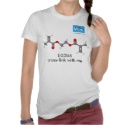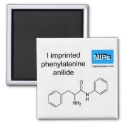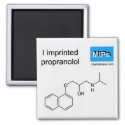|
|
Reference type: Journal
Authors: Jing T, Wang J, Liu M, Zhou YS, Zhou YK, Mei SR
Article Title: Highly effective removal of 2,4-dinitrophenolic from surface water and wastewater samples using hydrophilic molecularly imprinted polymers.
Publication date: 2014
Journal: Environmental Science and Pollution Research
Volume: 21
Issue: (2)
Page numbers: 1153-1162.
DOI: 10.1007/s11356-013-2007-0
Abstract: Novel hydrophilic molecularly imprinted polymers (MIPs) with high adsorption capacity were used as the sorbents to remove 2,4-dinitrophenol (2,4-DNP) from surface water and wastewater samples. Kinetic studies, dynamic adsorption and selectivity experiments of hydrophilic MIPs were investigated in this study. The results indicated that the maximum adsorption capacity of 2,4-DNP on hydrophilic MIPs was 138.9 mg g-1 and kinetic experimental data were described by the pseudo-second-order model. Furthermore, the effects of flow rate, initial concentration, pH value, and humic acid on the removal efficiency of 2,4-DNP were optimized. Compared with the active carbon, carbon nanotube, C18 sorbents and common MIPs, the removal efficiency of hydrophilic MIPs (100 mg) was very high with all above 92 % even though the sampling volume was more than 1 L. Investigated results of five times adsorptionGă˘desorption cycles indicated hydrophilic MIPs were high stability. In a word, the obtained results demonstrated that hydrophilic MIPs could be used as the effective sorbents for 2,4-DNP removal in practical application
Template and target information: 2,4-dinitrophenol, 2,4-DNP
Author keywords: Removal efficiency, selective adsorption, Hydrophilic molecularly imprinted polymers
|


 cross-link with me ball and stick shirt
cross-link with me ball and stick shirt







 I imprinted phenylalanine anilide magnet
I imprinted phenylalanine anilide magnet







 I imprinted propranolol magnet
I imprinted propranolol magnet






